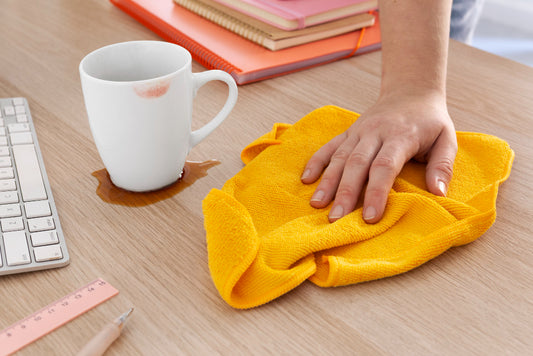A clean home is a haven of comfort and well-being, and at the heart of this cleanliness lies the humble mop. As we go about our daily cleaning rituals, there's more to the process than meets the eye. In this exploration, we will unravel the scientific magic behind the effectiveness of mops, deciphering how they work on various surfaces to bring about the cleanliness we cherish.
Understanding the Cleaning Mechanism:
At its core, the science behind mopping is grounded in the principles of physics and material science. Mops leverage various materials and designs to achieve optimal cleaning performance on different surfaces. Let's delve into how these cleaning wizards work their magic:
-
Material Matters:
- Different mop materials interact uniquely with various surfaces. Microfiber, for instance, is a star player. Its tiny fibers boast immense surface area, allowing them to trap and lift dirt, dust, and even bacteria with exceptional efficiency. This makes microfiber mops an excellent choice for a variety of surfaces, including hardwood, tile, and laminate.
-
Capillary Action:
- Capillary action is a key scientific principle at play during the mopping process. When the mop comes into contact with a liquid, whether it's water or a cleaning solution, capillary action causes the liquid to be drawn into the mop's fibers. This action enhances the mop's ability to absorb and carry away dirt and grime from the surface.
-
The Versatility of Water:
- Water is a universal cleaning agent, and its unique properties contribute to effective mopping. Water's polar nature allows it to dissolve a variety of substances, making it an excellent solvent for cleaning solutions. Mops utilize the power of water to break down and lift away stains and contaminants from different surfaces.
Adapting to Flooring Types:
Different flooring types present varying challenges, and mops are designed to adapt to these challenges through specific cleaning mechanisms:
-
Hardwood Floors:
- Hardwood floors demand a delicate touch. Mops designed for hardwood utilize microfiber or soft materials to prevent scratching. They work by trapping and lifting dirt without causing damage to the delicate wood surface.
-
Tile and Grout:
- Tile floors often harbor grime within grout lines. Mops equipped with advanced designs, such as spin mops with rotating heads or brushes, effectively scrub tile surfaces, reaching into grout lines to dislodge and lift stubborn dirt.
-
Laminate Surfaces:
- Laminate flooring requires a balanced approach. Spray mops, which dispense controlled amounts of cleaning solution, are excellent for laminate. They ensure that moisture is kept in check, preventing potential damage to the laminate surface.
-
Carpeted Areas:
- While traditional mops are not suitable for carpets, carpet mops or steam mops designed specifically for carpets utilize steam and brushes to penetrate carpet fibers. The steam helps break down stains, while the brushes lift dirt to the surface for easy removal.
The Role of Friction:
Friction is a fundamental force that aids mops in loosening and lifting dirt from surfaces. As the mop is moved across the floor, the friction between the mop material and the surface helps dislodge particles, ensuring a thorough clean. The design of mop heads, whether flat, string, or sponge, influences the amount of friction generated during the cleaning process.
The Importance of Mop Design:
Beyond the cleaning materials, the design of the mop plays a crucial role in its effectiveness:
-
Flat Mops:
- These mops, with their wide, flat heads, are excellent for larger surface areas. The broad design ensures maximum contact with the floor, optimizing cleaning efficiency.
-
String Mops:
- String mops are designed for heavy-duty cleaning. The strands provide a textured surface that scrubs away dirt, making them ideal for industrial or high-traffic areas.
-
Sponge Mops:
- Sponge mops are versatile and absorbent, making them suitable for a variety of surfaces. The sponge material conforms to the floor, ensuring thorough cleaning, especially in tight corners.
-
Spin Mops:
- Spin mops introduce a mechanical element to cleaning. The spinning action helps agitate and lift dirt, while the mop head design ensures even coverage and contact with the floor.
Adapting to Cleaning Solutions:
Mops are not standalone cleaning tools; they often work in tandem with cleaning solutions. The chemistry of these solutions interacts with contaminants on the floor, facilitating their removal. Choosing the right cleaning solution for the specific surface ensures a harmonious cleaning process.
In conclusion, the science behind a clean home involves a harmonious blend of materials, physics, and design principles. Mops, our trusty cleaning companions, harness these scientific elements to ensure effective cleaning on a variety of surfaces. Understanding the intricacies of how mops work empowers us to make informed choices, ensuring that our cleaning routines are not only effective but also tailored to the unique needs of our living spaces. So, the next time you wield your mop, know that you're not just cleaning; you're conducting a symphony of scientific cleaning magic!




